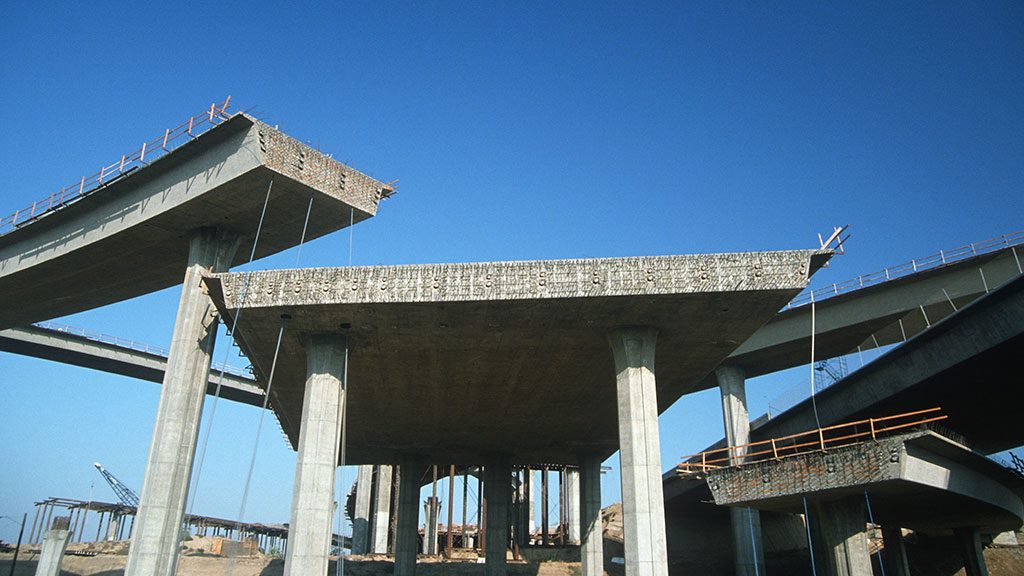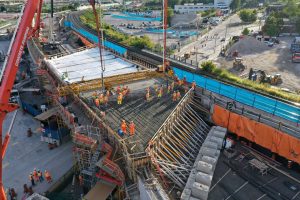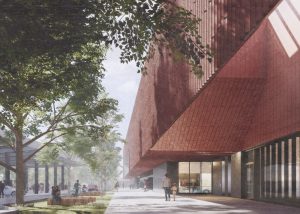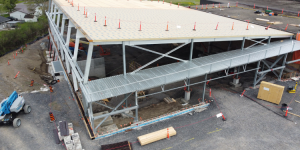After a stretch of several months earlier in the second half of 2017, when many of the Census Bureau’s sub-category put-in-place (PIP) construction spending numbers stalled, some sprightlier results were recorded once again in November.

Given that 11 of last year’s 12 months have now been measured, the 2017 over 2016 year-end percentage-change for total construction will almost certainly be close to +5.0%. All the increase will have originated in the residential sector, +11.0%, with non-residential remaining flat.
It’s important to note, however, (i.e., from accompanying Table 1) that with respect to latest three-month results, non-residential work has been staging a comeback. For latest 3-months over previous 3-months (annualized), ‘total’, residential and non-residential are almost the same, only slightly below +9.0%
‘Speed Up / Slow Down’ Table:
The percentage levels and changes in Table 1 are based on the Census Bureau’s seasonally-adjusted (SA) November 2017 and earlier put-in-place construction statistics. ‘Put-in-place’ as a concept is meant to mirror work-in-process or progress payments as projects proceed.
For each type-of-structure, Table 1 takes the behind-the-scenes put-in-place data and compares the percentage changes of latest-12-months-over-previous-12-months versus latest-three-months-over-previous-three-months (annualized).
If the three-month percent change exceeds the 12-month percent change, then construction activity in that type-of-structure category is speeding up. A check mark is entered in the far-right column. If the opposite is occurring, a check mark is entered in the ‘slowing down’ column.
If a type-of-structure category has a latest 3-month percent-change that is negative, but less negative, than its 12-month percent-change, such a circumstance is also considered to be an instance of ‘speeding up’ and warrants a check mark in the right-hand column. (Or, if it’s turning more negative, then it’s ‘slowing down’ further.)
If the percentage changes for a type-of-structure swing from negative to positive, or vice versa, then it’s obvious where the check mark should go.
Table 1: U.S. Put-in-place Construction Investment − November, 2017
Based on ‘current’ (i.e., not adjusted for inflation) $s, seasonally adjusted at annual rates (SAAR)
| Weighting of type-of-structure category (% of total $s) |
Year to date 2017/ Year to date 2016 (from monthly averages of SAAR data) |
Latest 12 mons vs. previous 12 mons | Latest 3 mons vs. previous 3 mons (annualized) |
Slowing Down 1 of 3 ‘Total’ categories / 7 of 16 sub-categories |
Speeding Up 2 of 3 ‘Total’ categories / 8 of 16 sub- categories |
||||||
| Total Construction | 100.0% | 4.2% | 4.6% | 8.8% | ✔ | ||||||
| Total Residential | 42.8% | 10.9% | 11.0% | 8.9% | ✔ | ||||||
| Total Nonresidential | 57.2% | -0.2% | 0.3% | 8.6% | ✔ | ||||||
| Lodging | 2.3% | 6.7% | 8.0% | 6.2% | ✔ | ||||||
| Office | 5.6% | 4.0% | 5.8% | -5.8% | ✔ | ||||||
| Commercial (retail) | 7.0% | 14.3% | 15.1% | 2.3% | ✔ | ||||||
| Health care | 3.3% | 3.3% | 3.2% | 17.3% | ✔ | ||||||
| Educational | 7.9% | 3.3% | 3.6% | 39.6% | ✔ | ||||||
| Religious | 0.3% | -7.6% | -6.8% | -14.3% | ✔ | ||||||
| Public safety | 0.7% | 2.3% | 2.5% | 35.3% | ✔ | ||||||
| Amusement and recreation | 1.8% | 4.8% | 5.3% | -1.9% | ✔ | ||||||
| Transportation | 3.7% | 2.8% | 2.3% | 44.7% | ✔ | ||||||
| Communication | 1.8% | 4.4% | 4.5% | -6.2% | ✔ | ||||||
| Power (electric; oil & gas) | 7.7% | -5.6% | -4.2% | -6.5% | ✔ | ||||||
| Highway and street | 7.0% | -4.0% | -4.3% | 13.0% | ✔ | ||||||
| Sewage and waste disposal | 1.7% | -15.5% | -15.6% | 26.7% | ✔ | ||||||
| Water supply | 0.9% | -9.6% | -8.7% | 4.0% | ✔ | ||||||
| Conservation and development | 0.6% | -7.7% | -5.9% | 63.8% | ✔ | ||||||
| Manufacturing | 4.9% | -12.2% | -11.7% | -11.4% |
In the final two columns, if there is no check mark in the cell, then the type-of-structure category has stayed within 1.0%, up or down.
A negative that becomes more negative is considered to be ‘slowing down’; if less negative, then ‘speeding up’.
Data source: Census Bureau / Table: ConstructConnect
November’s Results:
In the comparison of latest-3-months versus latest-12-months, 7 of the 16 sub-categories of construction ‘slowed’ in November, while eight ‘speeded up’. In other words, there was a mildly positive balance.
‘Lodging’ (moving from +8.0% to +6.2%), ‘office’ (from +5.8% to -5.8%), ‘commercial/retail’ (from +15.1% to +2.3%), ‘amusement and recreation’ (from +5.3% to -1.9%) and ‘power’ (from -4.2% to -6.5%) have all ‘slowed down’.
Providing counterweight, however, have been a half-dozen other major sub-categories: ‘health care’ (moving from +3.2% to +17.3%); ‘educational’ (from +3.6% to +39.6%); ‘public safety’ (from +2.5% to +35.3%); ‘transportation’ (from +2.3% to +44.7%); ‘highway and street’ (from -4.3% to +13.0%); and ‘sewage and waste disposal’ (from -15.6% to +26.7%).
Especially striking from the above paragraph are the super-charged latest-3-month results for ‘educational’, ‘public safety’ and ‘transportation’.
‘Manufacturing’ has stayed in decline, but at least its degree of retreat has held steady (i.e., barely moving from -11.7% to -11.4%).











Recent Comments